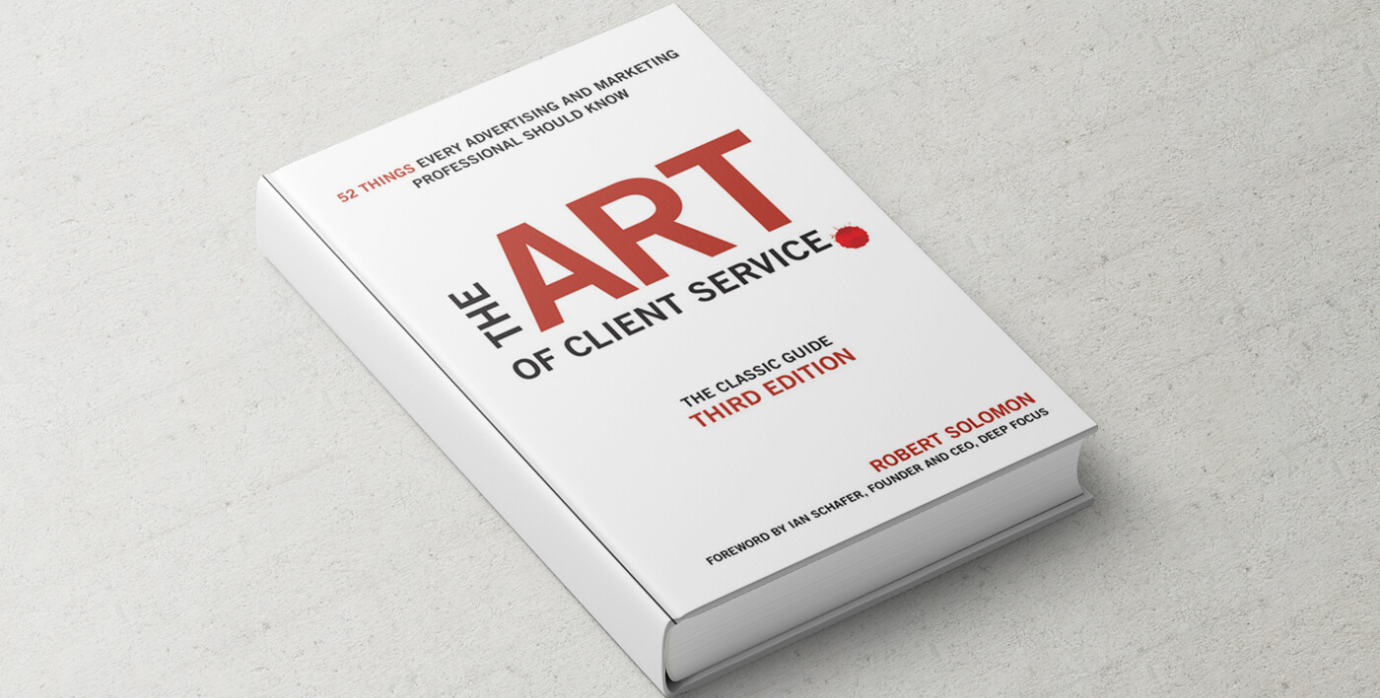270B is a minority-owned business

The Art of “The Art of Client Service”: A Book Review
When I first read the Art of Client Service by Robert Solomon, it was when I was hired at 270B. I had asked Jeffrey Lefkovits (Director of Client Services) what I could do to prepare for my first day, and he recommended I read this book. At the time, a lot of it flew over my head as I still wasn’t clear on what exactly it meant to be an Account Coordinator, but I was able to start with a general idea of what would be expected of me.
Now, it’s been two years and I’m starting my first official week as an Account Manager at 270B – I figured now was a perfect time to give the Art of Client Service a second read.
What It’s All About
The premise of the Art of Client Service is pretty straightforward: it’s 52 things every advertising and marketing professional should know (as proclaimed by the cover of the book) and it deals with everything from writing a simple conference report to delicately managing unhappy clients.
Each of the 52 things accounts for one short “chapter”, making it a great intro read to account service. It puts into simple words things that you’d sometimes miss when moving as quickly as you do in advertising. There are a lot of chapters that could have slogged on with industry jargon, but instead were easily digestible with lots of “of course!” moments (Solomon references the Elements of Style by William Strunk Jr. and E.B. White, a book I’m fond of that repeatedly emphasizes the importance of brevity and writing the way you talk, so he gets extra points for that).
Of course, the thing that kept me interested in the book is the way Solomon talks about producing good work – like it’s special, like it’s magic. He has a deep passion for this industry and helping the people in it that’s apparent in each anecdote he writes. I suppose when you’ve been a part of the industry long enough, you build up enough stories to fit any concept you’re trying to illustrate. His energy and humor made me want to keep reading, even about a topic as dry as account service.
Takeaways
The first time I read the Art of Client Service, it was the practical knowledge that I was focusing on; what makes a good brief, the best way to create a budget, how to give a great presentation. This time around, I found myself focusing more on the soft skills Solomon talks about.
While I’m certainly not yet an expert on briefs or budgets or presentations, it’s the relationship-building side of account management that I’m newest to, and that Solomon cites as the most important. I hope that in the next two years, I’ll have learned enough about interacting with clients that Solomon’s tips will feel familiar the same way his practical ones did during this reread. Maybe in two years, I’ll read it again and discover even more things to learn about the Art of Client Service.







